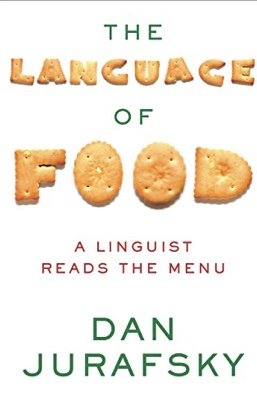The Language of Food: A Linguist Reads the Menu by Dan Jurafsky (W.W. Norton & Company)
Even the least adventurous American eater owes a big debt of gratitude to China. Dan Jurafsky’s research shows that, if it weren’t for the Chinese, bottles of ketchup might never have gained dominance in U.S. kitchens.
When Jurafsky’s daughter pointed out that “tomato ketchup” was redundant because that was the only kind of ketchup in existence, her father began delving into the origins of this omnipresent condiment. A Hong Kong friend provided the answer--”ketchup” is a word that comes in direct translation from Cantonese--ke means tomato and tchup is sauce. The mystery then became how did ketchup gain a Cantonese name?
The answer turned out to be fish sauce, the fermented fish liquid that’s the staple of many Southeast Asian cuisines. Inhabitants of Southern China depended on fish as their primary food source and learned that fermentation not only preserved their catch, the byproduct of the fermentation provided a tasty condiment. When the Han Chinese chased the “Yi barbarians,” more properly known at Khmer-Mon and Tai people, into Southeast Asia, fish sauce went with them. But the process of fermentation became popular in China where it led to soy sauce, spread to Japan in the form of sushi, and was seized upon by Western sailors when they found that Indonesian ke-tchup made their seaboard rations much more palatable.
The earliest recipe for ketchup appeared in English in 1732, and was credited to a British trading post in Sumatra. When the sauce migrated to England, shallots, mushrooms, and walnuts gradually took precedence over the fermented fish, with a dash of anchovies giving a trace of its original flavor (as is still found in ke-tchup’s descendant Lea & Perrins Worcestershire Sauce). In 1817 tomatoes took over and this is the version that traveled to America, where it became thicker, sweeter, and totally devoid of fish. (How the less appetizing name of “catsup” came about is still an unexplained mystery.)
Ketchup isn’t the only fermented Chinese invention to have invaded Western kitchens. Although the creation of molasses is credited to India in 500 BCE, it took China to ferment it with rice and palm sugar, creating arrack, a liquor invented long before rum or gin. This was also seized upon by English sailors, probably with even more enthusiasm than they had for fish sauce. When arrack was mixed with citrus, sugar, spices, and water, the British Navy’s “punch” may have been the precursor to the cocktail—once again thanks to China.
Although China didn’t invent ice cream, if they hadn’t discovered gunpowder that dessert may never have come into being. Potassium nitrate or saltpeter was once called “Chinese snow” in Arabic because it was a major component of the gunpowder exported by China. Arabs were the ones to find that Chinese snow could chill water and centuries later it was used to create the first wine slushy in Italy. Sorbet soon followed.
Jurafsky points out that the one food Americans adore and think of as being “Chinese” isn’t from China at all. Fortune cookies, found in every old-school Chinese restaurant in the U.S., first appeared in Kyoto as little cookie-shaped crackers, each one holding a paper fortune. (A similar cookie is sold on the streets of Bangkok, but without the enclosed fortune.) Now almost 3 billion fortune cookies are made, sold, and eaten all around the world—but not in China, where sweets aren’t usually offered at the end of a meal.
The Language of Food dives deep into culinary matters--the vocabulary of menus and Yelp reviews, the importance of sound symbolism when it comes to giving a food a name, the way adjectives can reveal social class. But it’s in food history that the book excels, making us realize that without China, hamburgers might lack savor, there might be no such thing as Happy Hour, Baskin-Robbins might never have become a household word, and some of us would be much thinner and far less happy.~Janet Brown
